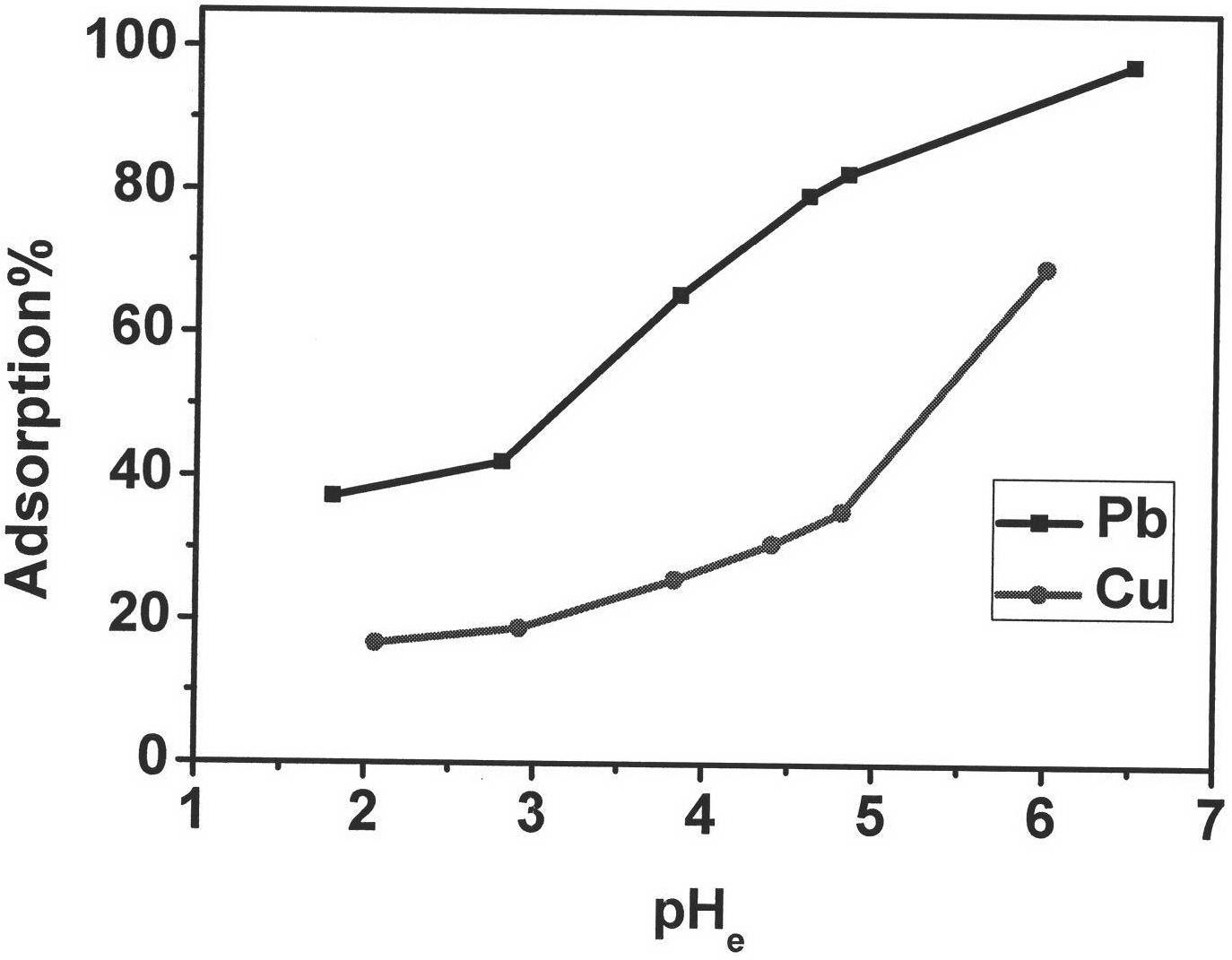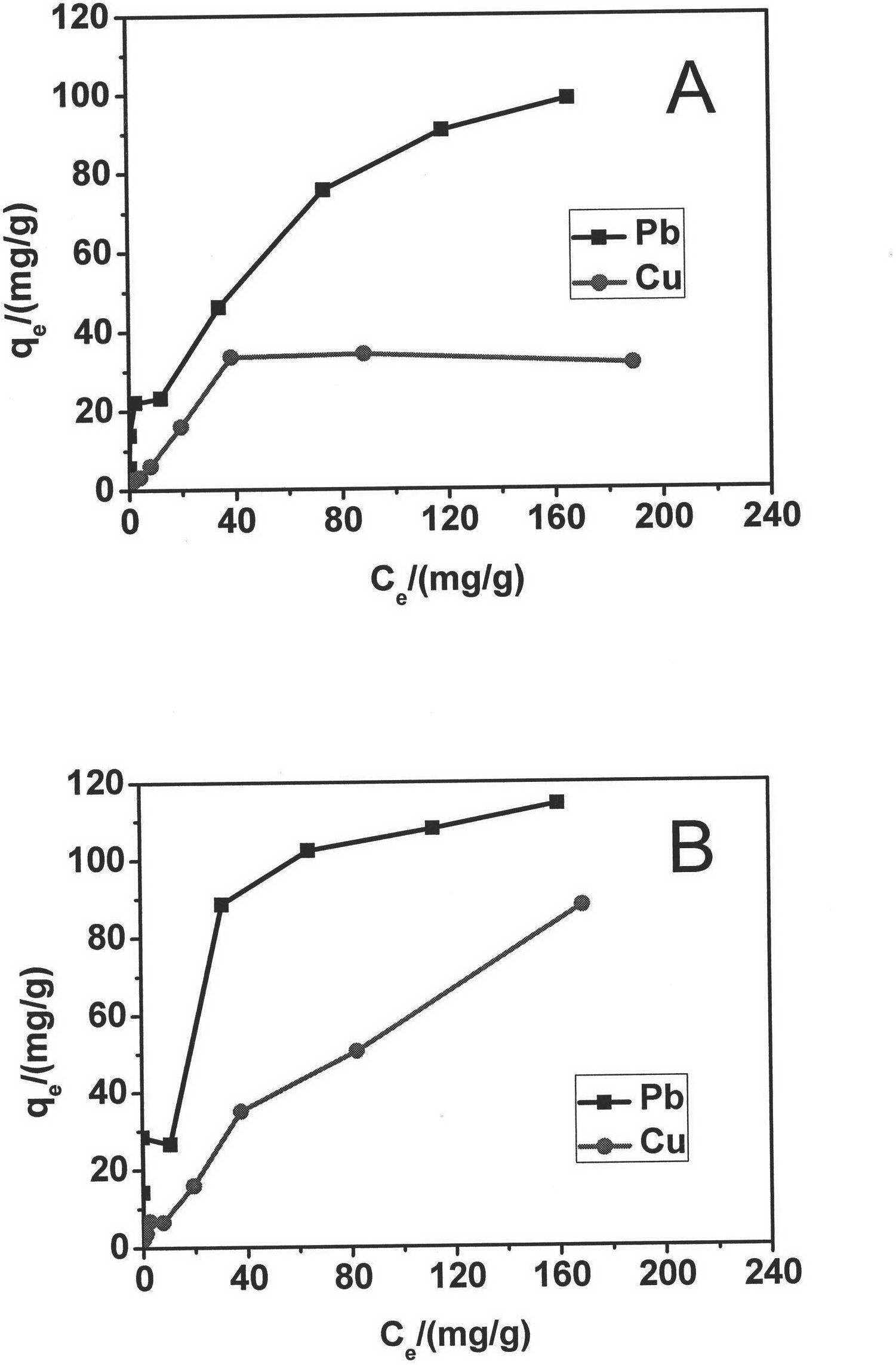Preparation method and application of Beta-cyclodextrin grafted carbon nano tube adsorbing material
A carbon nanotube and adsorption material technology, which is applied in the field of nanometer new materials and environmental protection, can solve the problems of low saturated adsorption capacity, harsh conditions, and many steps, and achieves low equipment requirements, enhanced adsorption capacity, and cheap and easy-to-obtain raw materials. Effect
- Summary
- Abstract
- Description
- Claims
- Application Information
AI Technical Summary
Problems solved by technology
Method used
Image
Examples
Embodiment 1
[0020] Put 0.5g of carbon nanotubes into 100mL of potassium permanganate solution (0.01mol / L), ultrasonically disperse at room temperature for 10min, then heat the mixture to reflux for 2h, after cooling, filter it with a sand core funnel, and then use distilled water repeatedly Rinse and filter three times, put the carbon nanotubes into a vacuum drying oven and dry at 80°C to obtain oxidized carbon nanotubes, which are designated as CNTs-ox.
[0021] Put 0.1g of CNTs-ox into 80mL of β-cyclodextrin aqueous solution, ultrasonically disperse for 10min, then heat and reflux under magnetic stirring for 1h, centrifuge to discard the upper layer solution, then wash repeatedly with distilled water, centrifuge 7 times, vacuum at 80℃ After drying, the cyclodextrin-grafted carbon nanotube adsorption material is obtained, which is denoted as CNTs-β-CD.
Embodiment 2
[0023] Put 1g of carbon nanotubes into 100mL of potassium permanganate solution (0.1mol / L), ultrasonically disperse at room temperature for 10min, then heat the mixture to reflux for 5h, after cooling, filter with a sand core funnel, and rinse repeatedly with distilled water , suction filtration 3 times, put the carbon nanotubes into a vacuum drying oven at 100° C. to dry to obtain oxidized carbon nanotubes, denoted as CNTs-ox.
[0024] Put 0.1g of CNTs-ox into 50mL of β-cyclodextrin aqueous solution, ultrasonically disperse for 60min, then heat and reflux under magnetic stirring for 8h, centrifuge to discard the upper layer solution, then wash repeatedly with distilled water, centrifuge 7 times, and vacuum at 180℃ After drying, the cyclodextrin-grafted carbon nanotube adsorption material is obtained, which is denoted as CNTs-β-CD.
Embodiment 3
[0026] Put 1.5g of carbon nanotubes into 100mL of potassium permanganate solution (0.3mol / L), ultrasonically disperse at room temperature for 50min, then heat the mixture to reflux for 6h, after cooling, filter it with a sand core funnel, and then use distilled water repeatedly Rinse and filter three times, put the carbon nanotubes into a vacuum drying oven and dry at 120°C to obtain oxidized carbon nanotubes, which are designated as CNTs-ox.
[0027] Put 0.1g of CNTs-ox into 20mL of β-cyclodextrin aqueous solution, ultrasonically disperse for 30min, then heat and reflux under magnetic stirring for 10h, centrifuge to discard the upper layer solution, then rinse repeatedly with distilled water, centrifuge 7 times, vacuum at 60℃ After drying, the cyclodextrin-grafted carbon nanotube adsorption material is obtained, which is denoted as CNTs-β-CD.
PUM
| Property | Measurement | Unit |
|---|---|---|
| Adsorption capacity | aaaaa | aaaaa |
Abstract
Description
Claims
Application Information
 Login to View More
Login to View More - R&D
- Intellectual Property
- Life Sciences
- Materials
- Tech Scout
- Unparalleled Data Quality
- Higher Quality Content
- 60% Fewer Hallucinations
Browse by: Latest US Patents, China's latest patents, Technical Efficacy Thesaurus, Application Domain, Technology Topic, Popular Technical Reports.
© 2025 PatSnap. All rights reserved.Legal|Privacy policy|Modern Slavery Act Transparency Statement|Sitemap|About US| Contact US: help@patsnap.com


